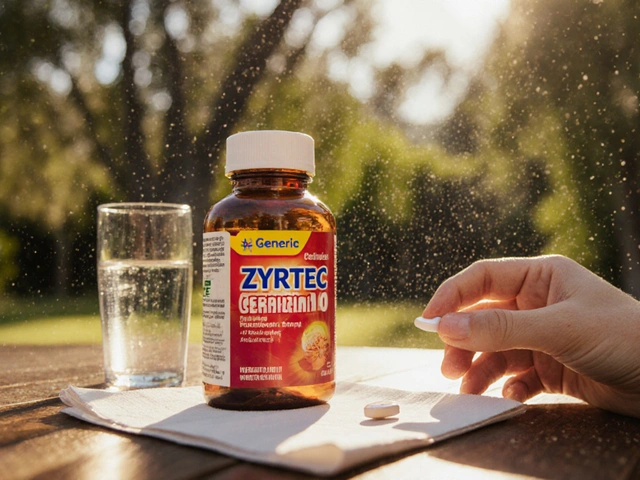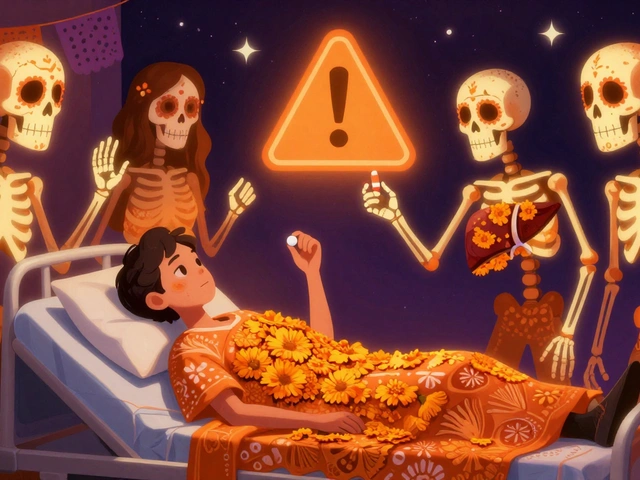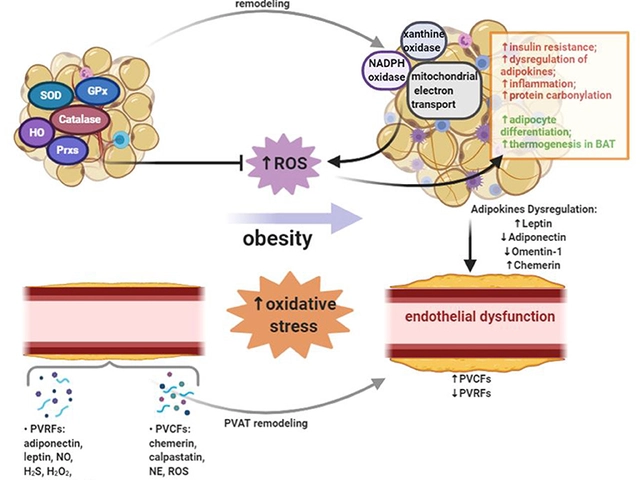Recognizing Breathing Disorder Symptoms in Children: Signs, Red Flags, and What to Do

Most parents spot coughs and fevers. The real trick is catching breathing trouble before it spirals-because kids can look okay right up until they’re not. This guide shows you what “not okay” looks like, how to check at home with zero gear, and when to get help fast.
TL;DR
- Watch effort, not just noise: fast breathing, chest pulling in, flaring nostrils, grunting, or blue/grey lips need urgent care.
- Normal breathing rate changes with age. If your count is well above normal or you see retractions, act quickly.
- Wheeze = asthma/viral most times; barky cough + noisy inhale = croup; loud snore + daytime sleepiness = possible sleep apnea.
- Immediate red flags: struggling to speak, head bobbing, drowsy or confused, pauses in breathing, or stridor at rest.
- Document what you see (rate, sounds, fever, meds given). It speeds up diagnosis and treatment.
Spot the signs early: what’s normal, what’s not
Kids compensate. They can keep oxygen levels up for a while, even when their work of breathing is huge. The fastest way to avoid a midnight panic is to learn the visible “work” signs and know the normal breathing rate for your child’s age. That way, you’re not guessing.
Here’s what to look for first:
- Rate: Count breaths for a full 60 seconds while your child is calm. Each rise of the chest = one breath.
- Effort: Chest or tummy pulling in under the ribs, at the neck (suprasternal), or between ribs (intercostal). Head bobbing in infants is a late sign.
- Noises:
- Wheeze - musical, on breathing out. Common in asthma or viral wheeze.
- Stridor - harsh, on breathing in. Think croup or upper airway blockage; stridor at rest needs urgent care.
- Grunting - short sound at the end of each breath. The body’s way to keep air in; treat as urgent.
- Crackles - bubbly sound, often pneumonia/bronchiolitis; clinicians usually pick this up.
- Color and behavior: Blue/grey around lips, pale or mottled skin, unusually quiet, floppy, or irritable = worry signs.
- Other clues: Feeding less (infants), less wet nappies/urine, fever, chest pain, or vomiting after coughing.
Normal breathing changes with age. Use this cheat sheet as a quick reference. (Ranges compiled from the Royal Children’s Hospital Melbourne and the American Academy of Pediatrics; individual kids vary.)
| Age | Typical resting RR (breaths/min) | Concerning RR (consider context) | Action prompt |
|---|---|---|---|
| Newborn-2 months | 30-60 | Persistent >60 | If >60 with retractions, poor feeding, or color change, seek urgent care. |
| 2-12 months | 30-50 | Persistent >50 | Fast rate plus nostril flaring or grunting = urgent assessment. |
| 1-3 years | 24-40 | Persistent >40 | Combine with signs of effort before deciding; trust your gut. |
| 4-5 years | 22-34 | Persistent >34 | Ask yourself: Is the child speaking in full sentences? If not, act. |
| 6-12 years | 18-30 | Persistent >30 | Rate + retractions or wheeze = prompt medical review. |
| 13-18 years | 12-20 | Persistent >24 | Any fast rate at rest with chest pain or short sentences needs care. |
Quick note: a child might breathe faster briefly after crying, running, or with a fever. Recheck when calm. If the rate stays high or effort looks heavy, act.
Do a 60‑second check that works day or night:
- Look: Is the chest sucking in under ribs or at the neck? Any head bobbing?
- Listen: Wheeze on exhale? Stridor on inhale? Grunting?
- Count: Breaths for 60 seconds while calm; compare to the table by age.
- Talk/cry test: Can they speak a full sentence or feed normally?
- Color/energy: Blue/grey lips, unusually sleepy, or too tired to play?
If you own a pulse oximeter and know how to use it, persistent oxygen saturation below about 92-94% at rest in a child is concerning (thresholds vary by condition; clinicians use context). If your child looks unwell, don’t wait on a number.
Red flags that mean urgent medical care now:
- Stridor at rest, drooling with a muffled voice, or severe chest/neck retractions
- Blue/grey lips, very pale or mottled skin
- Too breathless to talk, feed, or walk; fast worsening
- Pauses in breathing (apnoea), or a baby who is floppy or hard to rouse
- Wheezing not easing after your prescribed reliever, or needing it more often than every 3-4 hours
Why this matters: late recognition is a common reason kids with pneumonia, asthma attacks, or croup end up in hospital. The signs above are drawn from 2023-2024 pediatric guidance (RCH Melbourne, AAP, NICE).

What it might be-and what to do right now
Different breathing disorders have signature patterns. You don’t need to diagnose at home, but spotting the pattern helps you make the next move with confidence. Here’s a parent-sized map of the usual suspects.
- Asthma / Viral Wheeze
- Clues: Wheeze on breathing out, tight chest, cough (often worse at night/early morning), short of breath after play or with colds. Family history of asthma/eczema/allergies helps the case.
- Action: Use your child’s reliever (salbutamol/albuterol) via spacer per their asthma plan. If no plan, typical advice is several puffs spaced out, but follow your doctor’s instructions. If wheeze or effort persists or returns within 3-4 hours, seek medical review. Severe signs = urgent care.
- Bronchiolitis (often RSV, under 2 years)
- Clues: Starts like a cold, then fast breathing, tugging under ribs, poor feeding. Wheeze or crackles may be present. Peaks day 3-5.
- Action: Fluids, nasal saline/suction for feeds, watch work of breathing. Early review for young babies, premature infants, or if underlying conditions. Red flags = urgent care.
- Croup (laryngotracheitis)
- Clues: Barky “seal-like” cough, hoarse voice, stridor on inhale, worse at night, usually in kids 6 months-3 years.
- Action: Keep child calm (crying worsens stridor). Cool night air or steamy bathroom can briefly help. If stridor at rest or severe effort, seek urgent care (steroids and sometimes nebulized adrenaline are used in hospital).
- Pneumonia
- Clues: Fever, cough, fast breathing, chest/abdominal pain, lethargy. Sometimes one-sided crackles or reduced breath sounds.
- Action: Medical review same day. Bacterial cases may need antibiotics; viral do not. Trust the work-of-breathing signs and your gut.
- Allergic reaction / Anaphylaxis
- Clues: Sudden wheeze, throat tightness, stridor, hives, swelling of lips/eyes, vomiting after a known allergen (food, sting).
- Action: Follow the anaphylaxis plan. Use epinephrine auto-injector if prescribed; seek emergency care after use. Antihistamines don’t fix breathing swelling.
- Whooping cough (pertussis)
- Clues: Spasms of cough with “whoop” on inhale, vomiting after coughing, worse at night. Can be subtle in vaccinated kids but dangerous for infants.
- Action: See a doctor promptly; antibiotics reduce spread and help early. Keep infants away; household prophylaxis may be advised.
- Sleep-disordered breathing / Obstructive Sleep Apnea (OSA)
- Clues: Loud nightly snoring, pauses in breathing, gasps, mouth breathing, restless sleep, bedwetting, morning headaches, daytime irritability or inattention.
- Action: Discuss with your GP or paediatrician. Tonsils/adenoids, allergies, and weight can play roles. Sleep studies confirm diagnosis; treatment can include adenotonsillectomy, nasal steroids, or CPAP.
- Foreign body aspiration
- Clues: Sudden cough/choke while eating/playing, persistent localized wheeze, or recurrent pneumonia in the same spot.
- Action: Seek urgent assessment. If severe choking and not breathing, start age-appropriate first aid.
How to choose what to do, in plain language:
- Call emergency services now if you see stridor at rest, severe retractions, cyanosis, extreme lethargy, apnoea, or inability to speak/feed, or if your gut says “this is bad.”
- Same-day medical review if breathing is faster than normal with some effort, if wheeze returns within 3-4 hours despite reliever, if you suspect pneumonia, or if a baby is feeding poorly.
- Home care with close watch if symptoms are mild, your child is comfortable, playful, and drinking well, and you have a clear plan (e.g., asthma action plan).
Real-life examples to calibrate your radar:
- Toddler with a cold, now breathing 46/min, tummy pulling in under ribs, can’t finish a sentence: That’s beyond “just a cold.” Seek urgent assessment.
- School-age kid with wheeze after footy training, speaks in short phrases, improves after reliever but tight again in 2 hours: Needs medical review today and an updated asthma plan.
- Two-year-old wakes with barky cough and noisy inhale but settles when held, no stridor at rest: Keep calm, consider cool air, and monitor. Stridor at rest or increased effort = urgent care.
- Seven-year-old snores loudly most nights, hard to wake, grumpy at school: Book a GP visit to discuss possible sleep apnea.
What to note down for the doctor (saves time and improves care):
- Onset and triggers (cold, pollen, exercise, smoke, animals, thunderstorm)
- Breathing rate (full 60 seconds) and what effort signs you saw
- Fever history, chest pain, vomiting after cough, feeding/drinking changes
- Exactly what you gave (reliever puffs, time, response), and any allergies
- Past episodes, hospital visits, family history of asthma/allergy
FAQ (fast answers)
- Does steam help croup? Briefly breathing cool or steamy air may calm symptoms, but it’s not treatment. Stridor at rest needs urgent care.
- Should I buy a pulse oximeter? It can help if you’re trained and your child has a plan. Appearance and effort matter more than a single number.
- Can asthma start in preschool years? Yes. Many kids wheeze with viruses; some evolve into asthma. A GP can help sort patterns and trial preventers.
- Do antibiotics help wheeze? Not unless there’s a bacterial infection like pneumonia. Most wheeze with colds is viral.
- Are blue lips always an emergency? Yes-blue/grey lips mean poor oxygenation. Seek urgent care.
Why you can trust this: This summary lines up with 2023-2025 guidance from the Royal Children’s Hospital Melbourne clinical guidelines, the American Academy of Pediatrics, the UK’s NICE pneumonia guidance, the Australian Asthma Handbook (current updates), and ASCIA anaphylaxis advice. In Australia, asthma remains one of the most common chronic conditions in kids, and big pollen events (like Melbourne’s thunderstorm asthma) remind us how fast things can escalate.

Daily game plan: monitor, prevent, and prepare
Having a plan keeps panic out of the room. Here’s a simple, practical setup you can put in place today, especially if your child has had wheeze or heavy colds before.
Your home toolkit:
- A printed action plan (asthma or anaphylaxis if applicable)
- Reliever inhaler and a spacer with a well-fitting mask or mouthpiece (check size as your child grows)
- Nasal saline and a bulb/suction for infants
- Thermometer; optional pulse oximeter if your clinician recommends it
- Symptom log (a simple note on your phone works)
How to use a spacer properly (tiny errors matter):
- Shake inhaler, fit to spacer, ensure a good seal (mask covers nose and mouth).
- One puff into spacer, then 4-6 slow breaths in. Don’t stack puffs inside the spacer.
- Wait 30-60 seconds between puffs if more are prescribed.
- Rinse spacer weekly with warm soapy water, air-dry to keep static low. Replace if cracked.
School and sport plan:
- Give the school your child’s action plan and a spare reliever.
- Teach your child and carers the color zones on the plan (green, yellow, red).
- Pre-exercise reliever may be advised for exercise-induced symptoms-ask your doctor.
Reduce common triggers without turning your home into a lab:
- Smoke-free home and car. No exceptions.
- Dust control: wash bedding hot weekly, reduce soft toys in bed, vacuum with HEPA if dust-mite sensitive.
- Pollen seasons (big in Melbourne): keep windows closed on high-count days, shower after outdoor play, and have preventers up to date.
- Colds: hand hygiene, teach to cough into elbow, keep vaccinations current (influenza, whooping cough boosters).
- Mould: fix leaks, ventilate bathrooms, clean visible mould promptly.
When to ask for a review, even if things seem “fine”:
- Wheeze or night cough more than twice a month
- Any urgent visit for breathing in the past year
- Using reliever more than twice a week outside of sport
- Snoring most nights or any witnessed pauses in sleep
- You, your teacher, or coach notices exercise avoidance or lagging behind peers
Record better, decide better. A 20-second note in your phone makes patterns obvious:
- Date/time, activity or exposure (cold, grass, cat, smoke)
- Symptoms (rate, effort signs, wheeze/stridor), fever
- What you gave and the response time
Simple decision aid you can screenshot:
- Looks well, plays, drinks, normal rate: Home care and watch.
- Fast breathing for age + mild effort, speaks full sentences: Same-day GP/clinic.
- Stridor at rest, severe effort, blue lips, can’t talk/feed, very drowsy: Emergency care now.
What not to do (common pitfalls):
- Don’t wait for a wheeze to “sound worse” if effort is already high.
- Don’t stack multiple puffs into the spacer at once.
- Don’t rely on cough syrups for young kids; they don’t fix breathing effort and can be harmful.
- Don’t assume snoring is “cute” if it’s nightly.
- Don’t downplay smoke exposure-second-hand and third-hand smoke are powerful triggers.
If your child has known asthma, talk to your clinician about seasonal strategies. In Melbourne, thunderstorm asthma risk spikes in spring with high pollen and storm outflows; consistent preventer use and checking inhaler technique before the season begins make a real difference.
Next steps you can take this week:
- Save the age-based breathing rate table to your phone.
- Set a reminder to review spacer technique with your child.
- Ask your GP for a written action plan if you don’t have one.
- Walk through the 60-second check with your partner or carer so you’re on the same page.
Troubleshooting different scenarios:
- Noisy breather but normal rate and no effort: Could be upper-airway noise or snoring. Record a short clip and book a non-urgent review.
- Fast breathing with fever: Fever raises rate a little, but retractions, grunting, or poor color are not “just fever.” Seek care.
- Reliever barely helps: Recheck spacer seal/technique. If technique is good and symptoms persist, seek care and discuss preventers.
- Clear allergy trigger: Remove the trigger, follow the allergy plan, and review with your doctor about long-term control (e.g., intranasal steroids for rhinitis).
One last reassurance: you don’t need perfect measurements to make a good call. Appearance, effort, color, and your gut-anchored by the simple steps here-will guide you well. And for parents juggling work, school, and sport in Australia’s fast-changing seasons, a small routine-a nightly listen, a quick count when a cold starts-goes a long way.
Sources used while writing this have included recent guidance from the Royal Children’s Hospital Melbourne Clinical Practice Guidelines (updated through 2024), the American Academy of Pediatrics clinical reports (2023), NICE guidance for respiratory infections in children (updates through 2024), the Australian Asthma Handbook (current updates), the Australasian Society of Clinical Immunology and Allergy anaphylaxis guidelines (2022), the Sleep Health Foundation (pediatric OSA), and national health statistics on asthma in Australian children. These inform the signs, thresholds, and action steps presented here.
Stick this simple rule on your fridge: if you see fast breathing plus effort, or if your child can’t talk, feed, or stay awake normally, that’s your cue to get help-no second guessing. This is the core of recognizing breathing disorders in children before they turn into emergencies.







While the layperson assumes that counting breaths is the ultimate litmus test, seasoned clinicians recognize that respiratory effort supersedes raw numbers; the kinetic choreography of intercostal retractions, suprasternal tug, and diaphragmatic sighs is the true biomarker of decompensation.
In other words, a child clocking 38 breaths per minute may be perfectly fine, whereas a 30‑minute respirator with pronounced chest wall indrawing is shouting for help.
Heavy‑lidded vigilance, not just quantitative thresholds, is the cornerstone of pediatric airway stewardship.
Moreover, the emergent interplay between hypoxia‑driven tachypnea and compensatory hyperventilation renders static tables almost apologetically simplistic.
Thus, when you hear a parent babble about “normal rates,” politely redirect the conversation toward effort, coloration, and mental status.
In the grand schema of pediatric emergency medicine, the breath’s visual narrative eclipses a mere numeric glyph.
Great rundown! Just a quick tip: when you’re describing “retractions,” remember to use “intercostal” and “subcostal” correctly-they’re not interchangeable.
Also, keep your sentences active; “the child was observed” becomes sharper as “you observed the child.”
Overall, the guide is solid and the step‑by‑step checklist will help many parents feel empowered.
Keep up the clear, concise language.
I appreciate how the article balances clinical detail with everyday practicality.
It’s crucial to remind caregivers that a brief spike in respiratory rate after a run or fever can be physiologic, but persistent effort is a red flag.
Offering a simple pocket‑card or phone wallpaper with age‑specific rates could make the advice even more actionable.
Also, emphasizing that “listening for grunts” doesn’t require a stethoscope helps demystify bedside assessment.
All in all, this piece bridges the gap between pediatric guidelines and real‑world parental vigilance.
The systematic presentation of signs is commendably exhaustive; however, the section on “crackles” could benefit from clarifying that they are typically audible during inspiration rather than expiation.
Additionally, the table would be more user‑friendly if the “Concerning RR” column referenced “persistent” over a defined observation period (e.g., >5 minutes at rest).
Overall, the precision of the recommendations is high, yet a few minor edits would enhance clinical accuracy.
Wow, what a thorough compendium of pediatric respiratory red flags-truly a lifesaver for wary parents trying to navigate the murky waters of child health!
First off, I love how you’ve turned the daunting task of spotting distress into a bite‑size checklist that any caregiver can master in under a minute.
The stepwise “look, listen, count, talk/cry test, color/energy” framework feels almost like a CPR drill, but for everyday vigilance, and that analogy is spot‑on.
Moreover, the inclusion of age‑specific respiratory rate norms is a game‑changer; it cuts through the noise of generic advice that often leaves folks more confused than confident.
What really struck me is the emphasis on visual cues-chest wall retractions, head bobbing, and nasal flaring-because, as you noted, numbers alone don’t tell the whole story.
By demystifying grunting as a protective mechanism rather than a mere annoyance, you empower parents to act decisively rather than wait for the “worse” moment.
The section on differentiated disorders (asthma, bronchiolitis, croup, etc.) is both comprehensive and succinct, avoiding jargon while still delivering the nuance needed for proper triage.
I also appreciate the practical tips like using cool night air for croup and the reminder that a pulse oximeter is an adjunct, not a replacement, for clinical judgment.
The “Daily game plan” with a printable action plan and spacer technique guide is brilliant; it gives families a tangible resource they can stick on the fridge.
And let’s not overlook the cultural relevance of thunderstorm asthma in Melbourne-tying in regional phenomena makes the advice feel locally grounded.
One minor suggestion: perhaps add a quick reference graphic that visually maps effort signs to urgency levels; visuals often stick better than text when panic strikes.
Overall, the tone balances urgency with reassurance, and the layered “home care vs. same‑day review vs. emergency” decision aid is gold for reducing unnecessary ER visits while still safeguarding kids who truly need immediate help.
The only thing I’d tweak is the length of the “FAQ”-maybe tighten it to a few bullet points for faster scanning.
Nevertheless, this guide is a masterpiece of parent‑centric medical communication, and I’m confident it will save countless children from slipping through the cracks of delayed recognition.
Totally wow, thanks for the checklist 😊
The composition exhibits an undeniable erudite veneer, yet it appears to skirt the precipice of pretension without offering substantive novel insight.
While the adherence to guideline citations is commendable, the narrative could benefit from a more parsimonious delivery, lest the discerning reader become mired in superfluous exposition.
Nevertheless, the pragmatic recommendations concerning spacer technique and environmental mitigation are judiciously articulated.
In sum, the treatise stands as a respectable, if occasionally verbose, contribution to parental education.
Wow!!! This guide is sooo helpful; I mean, it covers everything-from the tiny little nose‑flaring to the big scary red‑flags!! (But, uhm, maybe a bit of a typo??? )
Also, the tables... they’re great, but could you maybe add a column?? for “when to call the doctor”??? Just a thought!!! 😊😊😊
Overall, love the vibe, keep it up!!!
What an empowering resource! It's reassuring to see a clear, step‑by‑step plan that parents can actually follow without feeling overwhelmed.
The emphasis on watching effort over pure numbers really demystifies the process and puts confidence back in caregivers' hands.
Keep spreading these practical guides-every family deserves this level of clarity.
While the article is thorough, it borders on enabling complacency by normalizing frequent bronchodilator use without stressing the underlying responsibility of medication adherence.
Parents should be reminded that over‑reliance on relievers can mask worsening disease and delay essential preventive therapy.
Responsibility and discipline are key.
As an avid advocate for national health resilience, I find this guide an exemplary model of how we can fortify our youth against respiratory peril.
The integration of local environmental considerations, such as thunderstorm asthma, underscores the necessity of region‑specific preparedness.
Moreover, the emphasis on proactive tools-spacers, action plans, and caregiver education-mirrors the disciplined approach our nation must adopt.
While the tone remains formally instructive, the underlying patriotic call to safeguard our next generation is unmistakable.
Let us champion such evidence‑based protocols across all communities.